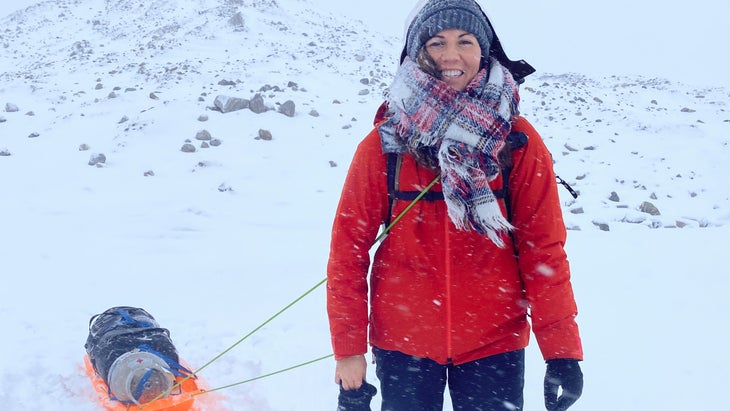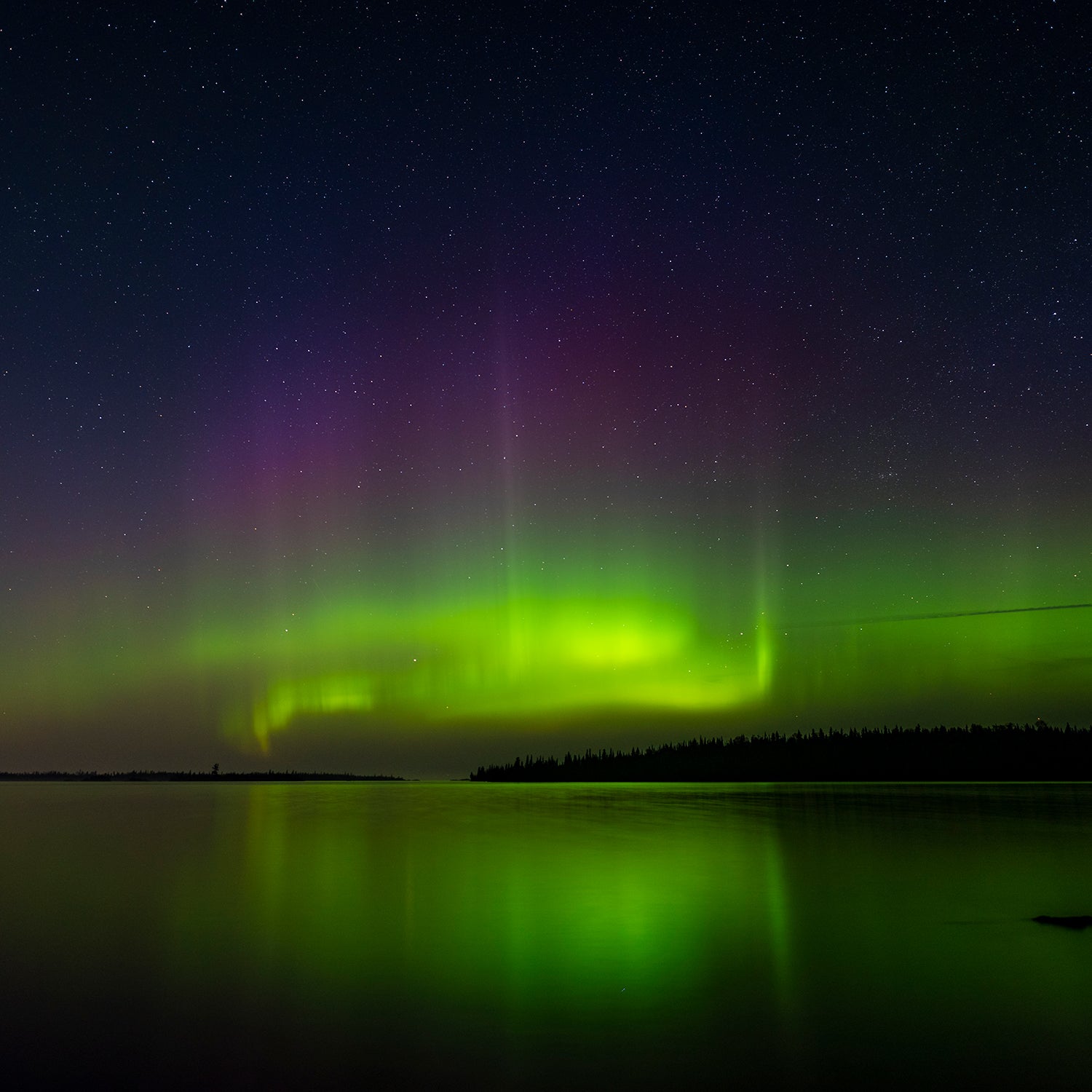Expecting yet another sea of dark skies, I unzipped my tent doorÔÇöbut this time, the scene looked different. My heart rate quickened. Wait, is that a green glow?
It was May 2021. My husband, Frank, and I were camped on the north shore of Isle Royale National Park, in the middle of Lake Superior. WeÔÇÖd taken a hellacious four-hour detour from our intended route up and over the rock-strewn islandÔÇÖs spine to get here. It was a gamble. Catching the northern lights in the lower 48 states is tricky: it requires near-perfect conditions, an unobstructed view to the north, minimal clouds, and an active aurora.
An avid northern-lights chaserÔÇöI have now hunted them (sometimes successfully, sometimes not) in Michigan, Wisconsin, Minnesota, and the Arctic CircleÔÇöI had already been nerding out on solar activity for three years when we visited Isle Royale. Yet with no cell service to monitor my northern-lights apps, I didnÔÇÖt know whether we might get skunked ÔÇŽ or see something.
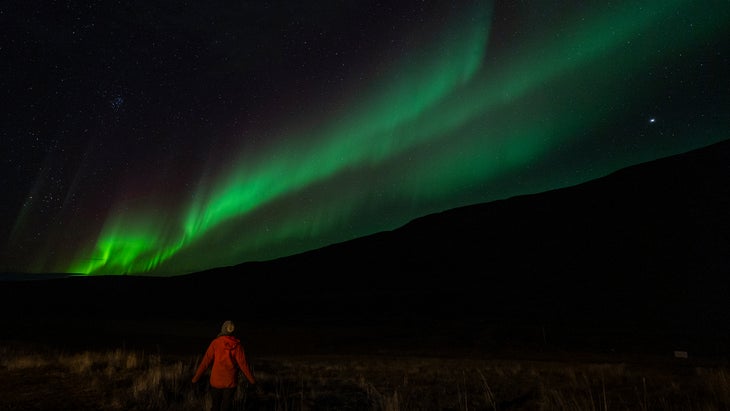
I knew it was possible: IÔÇÖd witnessed the lights on a road trip in the Upper Peninsula the previous summer, but the bright-green swirls had been largely obscured by cloud patches. That night on the remote Isle Royale, I crossed my fingers and waited.
The northern lights, predominantly associated with the northern latitudes, are beams of green, violet, and even red lights caused when charged particles from the sun interact with our atmosphere. Few night sights thrill national-park travelers like spotting the aurora borealis; scroll the hundreds of comments on the Park ServiceÔÇÖs latest from Denali for proof.
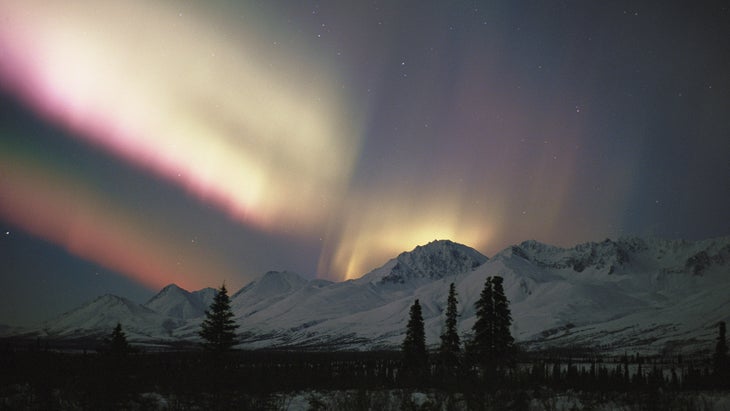
But you donÔÇÖt have to catch a flight to Iceland or Greenland, or brave the winter cold in Alaska, to experience that bright-green glow. You can see it in the national parks of the contiguous U.S. as well.
Better yet, your chances of seeing the lights are increasing. The sun travels through 11-year cycles of activity. During the stretch known as solar minimum, which last hit in late 2019, northern-lights activity wanes.╠řRight now weÔÇÖre marching toward what is known as solar maximum in , with every year improving as we move into peak aurora activity.
To spot auroras, youÔÇÖll need luck, an understanding of the phenomenon, and some planning legwork. That includes finding an aurora-hunting spot with minimal obstructions to the northern horizon (where those green ribbons dance); a strong geomagnetic stormÔÇöthe stronger the storm (measured via the Kp index of Kp 0 to Kp 9), the likelier the auroras; and clear skies or minimal clouds.
The lights youÔÇÖll witness in the lower 48 may look a bit more muted than those in Iceland because youÔÇÖre viewing them from farther awayÔÇöthatÔÇÖs why they often appear closer to the horizon. But down in the U.S. northern-border states, there is a perk: You can hunt auroras in every season, as, unlike Alaska, this stretch of the U.S. experiences nighttime darkness all year. And the quest is getting easier and easier thanks to the powerful new solar cycle.
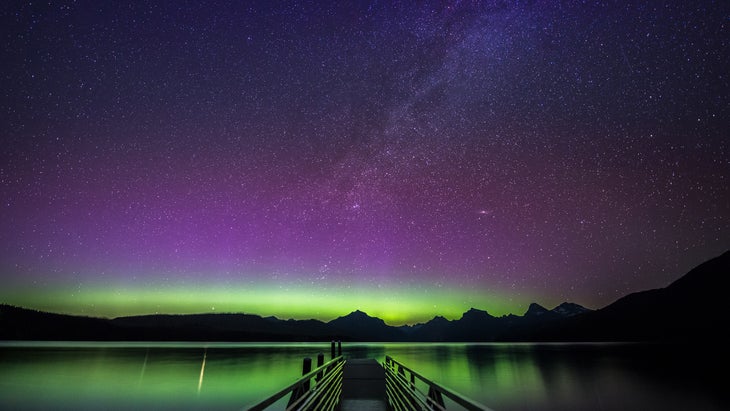
WeÔÇÖre already enjoying a boomÔÇöas evidenced by 2022ÔÇÖs news report upon news report (upon news report) of lower-48 shows to watch for, the giddy dialogue in the increasingly popular , and my own increasing views.
Take that night on Isle Royale. After waking up every half hour to check the skies from my tent, I finally saw the lime hueÔÇöand scrambled from my sleeping bag, parked myself on a lakeside boulder, stabilized my camera, and watched the lights dance for three hours amid a symphony of loon howls. I caught those lights once more from Saint Ignace on our drive home from the Isle Royale ferryÔÇöand then more than half a dozen times on a three-week trip through Iceland and Greenland this past fall.
Ready to play those increasing aurora odds? Here are seven of the best national parks in which to chase the northern lights, including tips on when, where, and how to see them.
1.╠ř┬á Acadia National Park, Maine
┤í│Ž▓╣╗ňż▒▓╣ÔÇÖs craggy shores and spruce-forested trails feel otherworldly under a green glow. This far-flung getaway offers the perfect aurora recipe: dark skies, open horizons, and a northern locale that often sees auroras between Kp 4 or Kp 5. Even without the lights, deliver pristine Milky Way and constellation viewing.
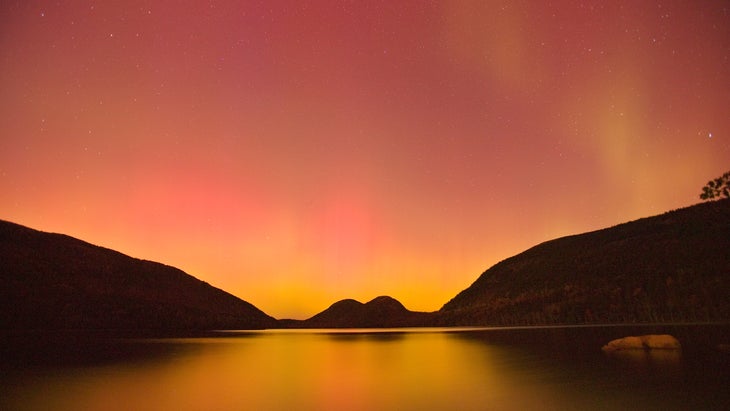
You have a few options here. The southern end of provides a clear, largely unobstructed view to the north; when winter conditions are right, daytime visitors can even ice skate or ice fish here. From spring through fall, drive up , the islandÔÇÖs tallest peak, for vistas that on clear days stretch as far as Mount Katahdin. This birdÔÇÖs-eye view is ideal for spotting the lights, but note: are required. Booking a hotel with unobstructed north-facing views makes aurora hunting a breeze. Try waterfront digs like or in Bar Harbor.
2.╠ř┬á Glacier National Park, Montana
When northern lights are forecast, aurora hunters flock to Glacier National Park. This northern-border state boasts some of the regionÔÇÖs darkest skies, due in large part to a cross-border dark-sky partnership between Glacier and CanadaÔÇÖs Waterton Lakes National Park, which have collaborated to minimize light pollution and protect their shared dark skies. Now, the parks make up the International first transboundary dark-sky park. This means GlacierÔÇÖs north horizon has little, if any, light pollution. You will need a minimum of a Kp 4 to see the lights here.
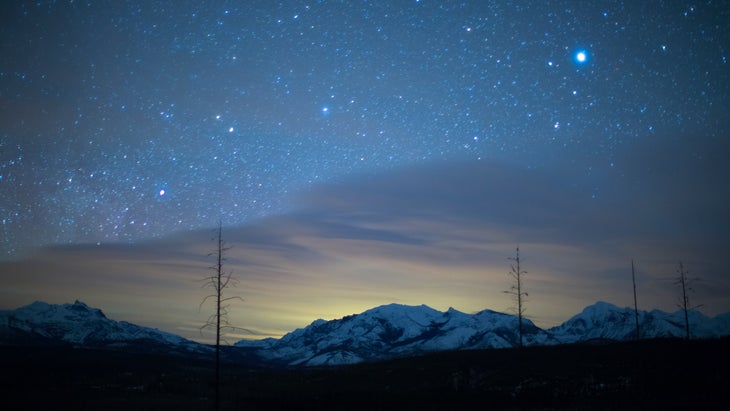
LetÔÇÖs heed some advice from the Montana landscape photographer Christina Adele. After a particularly vibrant northern-lights show this fall, she took to to share her two favorite scouting spots: the North Fork in the parkÔÇÖs northwest end and Lake McDonald, the parkÔÇÖs largest lake. For the latter, the and , both located on the southern end of Lake McDonald, are two great options for aurora-hunting overnights.
3.╠ř┬á Voyageurs National Park, Minnesota
Northern MinnesotaÔÇÖs Voyageurs National Park has all the makings of an ideal scoping site: dark skies, by the International Dark Sky Association (IDA) in 2020; clear horizons, with four large lakes and 26 smaller lakes; and one of the farthest-north locales in the lower 48. Even better, local experts you can see auroras here up to 200 times per year; theyÔÇÖre often visible with a Kp 4 or higher.
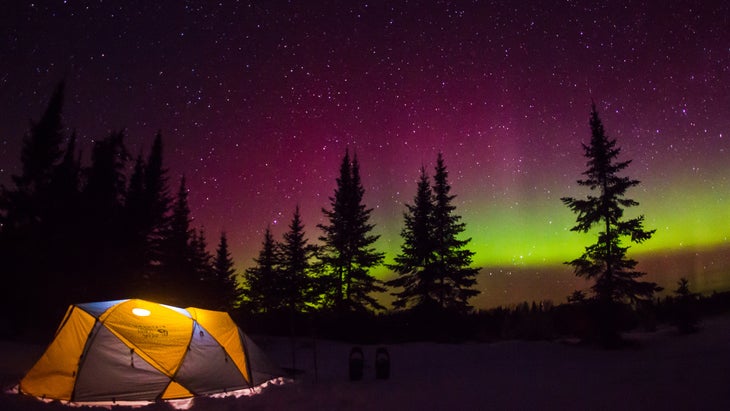
The park is also part of a movement to elevate Indigenous astronomy, including the local Ojibwe star knowledge, via resource sharing and in-person experiences. Read the Ojibwe artist and astronomy expert Carl GawboyÔÇÖs book Talking Sky before your trip, and see chapter nine on auroras to understand how Indigenous communities have long interpreted those eye-popping lights.
The Rainy Lake Visitor Center, Ash River Visitor Center, Voyageurs Forest Overlook Parking Lot, and Woodenfrog Beach for viewing. You can also book a stay at the aptly named, on the southern shore of the parkÔÇÖs Lake Kabetogama, which has cabins and lofts available year-round.
4.╠ř┬á Theodore Roosevelt National Park, North Dakota
Lakes arenÔÇÖt the only option for horizon views. The vast, open prairies across Theodore Roosevelt National Park are perfect for lower-48 aurora hunters. So, too, is the parkÔÇÖs northern-border geography. A Kp 5 here is ideal, but if youÔÇÖre here during a Kp 4 storm, itÔÇÖs worth heading out.
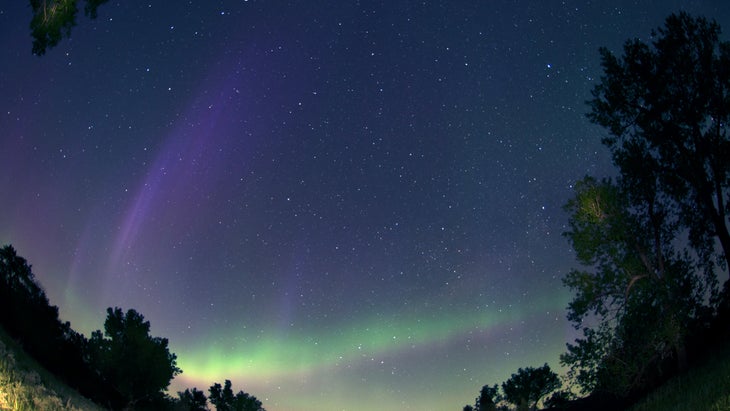
Theodore Roosevelt park is open 24 hours a day; virtually any stop-off with open views to the north horizon is fair game. The NPS recommends, with panoramas of the parkÔÇÖs unearthly badlands, to admire the skies. The hill-perched hotel is an optimal northern-lights-hunting basecamp. It provides quick park access and elevated vistas, including a deck with views to the north.
5.╠ř┬á Isle Royale National Park, Michigan
After that dazzling show in May 2021, Isle Royale remains my favorite national park for aurora hunting. Its far-flung locale in Lake Superior promises inky skies, but does make access tricky. This island park is only reachable by boat or seaplane from MichiganÔÇÖs Upper Peninsula or northern Minnesota; the parkÔÇÖs limited-run season is April through October. As for solar storm intensity, a Kp 4 is ideal.
Given Isle RoyaleÔÇÖs dense forests and high center ridge, the north Lake Superior shore is the best spot for wide, open views north. If youÔÇÖre arriving through the, try Lane Cove campground, where I caught the display. Starting at the islandÔÇÖs? Head to, another north-shore overnight site on the waterfront.
6.╠ř┬á North Cascades National Park, Washington
Given the towering mountains and thick forests, northern WashingtonÔÇÖs North Cascades National Park is a tricky spot for aurora hunting, but low light pollution and a position on the northern border make sightings possible. When the Kp is highÔÇöthink Kp 5 or upÔÇöand the clouds clear, youÔÇÖre in for quite a Cascade mountain treat.
The off North Cascades Highway, open 24 hours, is a proven spot for northern-lights views. Access to the viewpoint closes in the winter, according to the, but , just west of Ross Lake Overlook, is another strong option, and remains open year-round.
7.╠ř┬á Denali National Park, Alaska
Unlike the contiguous U.S. parks, Denali National Park experiences light displays during even small solar storms of Kp 1, Kp 2, or Kp 3, but there is one big limitation: darkness, or the lack of it. You wonÔÇÖt see northern lights here from late spring through August because of the midnight sun (when the light continues well past typical sundown time). That leavesÔÇöfall, winter, and early springÔÇöfor aurora hunting. While you can see auroras in all Alaska national parks, we chose Denali for this list because itÔÇÖs the most reachable in winter, particularly for independent travelers.
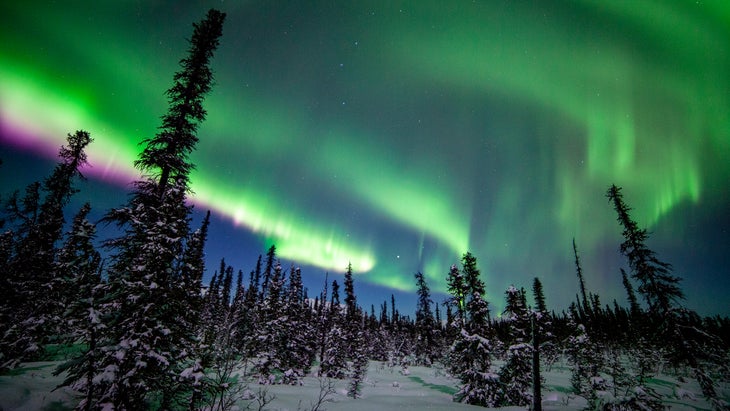
You can enjoy a quintessentially Alaskan northern-lights-hunting trip on an overnight dog-sledding tour with. The Alaska-based team has access to several huts throughout the park. That means dog-sledding by day and backcountry-lights chasing by night. Alternatively, join a with a local guide in the Denali area. The park is open 24 hours, so you can try aurora hunting on your ownÔÇöbut the dramatic weather, with temperatures down to -40 F, and the parkÔÇÖs minimal winter resources and accessibility require serious preparation. Stop by the at mile 1.4 on the park road to speak with a ranger if you have any questions while planning.
Note to readers: the Denali Park Road is closed for repairs after milepost 43 (the halfway mark); construction is anticipated to last until 2024, according to the . During warm-weather seasons, this closure restricts access to the parkÔÇÖs backcountry, although it wonÔÇÖt have much effect on winter travelers, as the park after milepost three every winter. Follow for construction and detour updates.
How to Be a Conscious Traveler
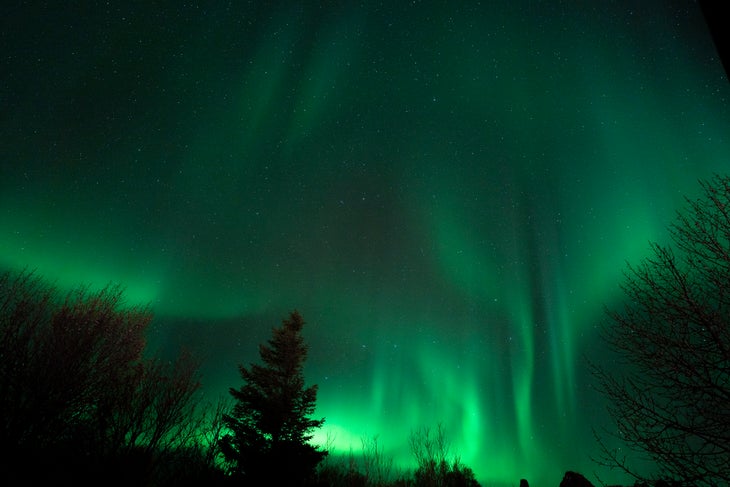
Please adhere to and responsible national-park travel principles, including but not limited to: be prepared for the conditions, watch for and steer clear of wildlife, stay on trails, never trespass, and never set up your aurora-hunting post in the middle of a road or parking lot.
Stephanie Vermillion is a travel and astro-tourism journalist and photographer whoÔÇÖs chased auroras from Iceland, Norway, and Greenland to Minnesota, Michigan, and New England. Her most recent excursion was a three-week lights-hunting trip through Greenland and Iceland this fallÔÇöwith not one but seven nights beneath those green swirls.
